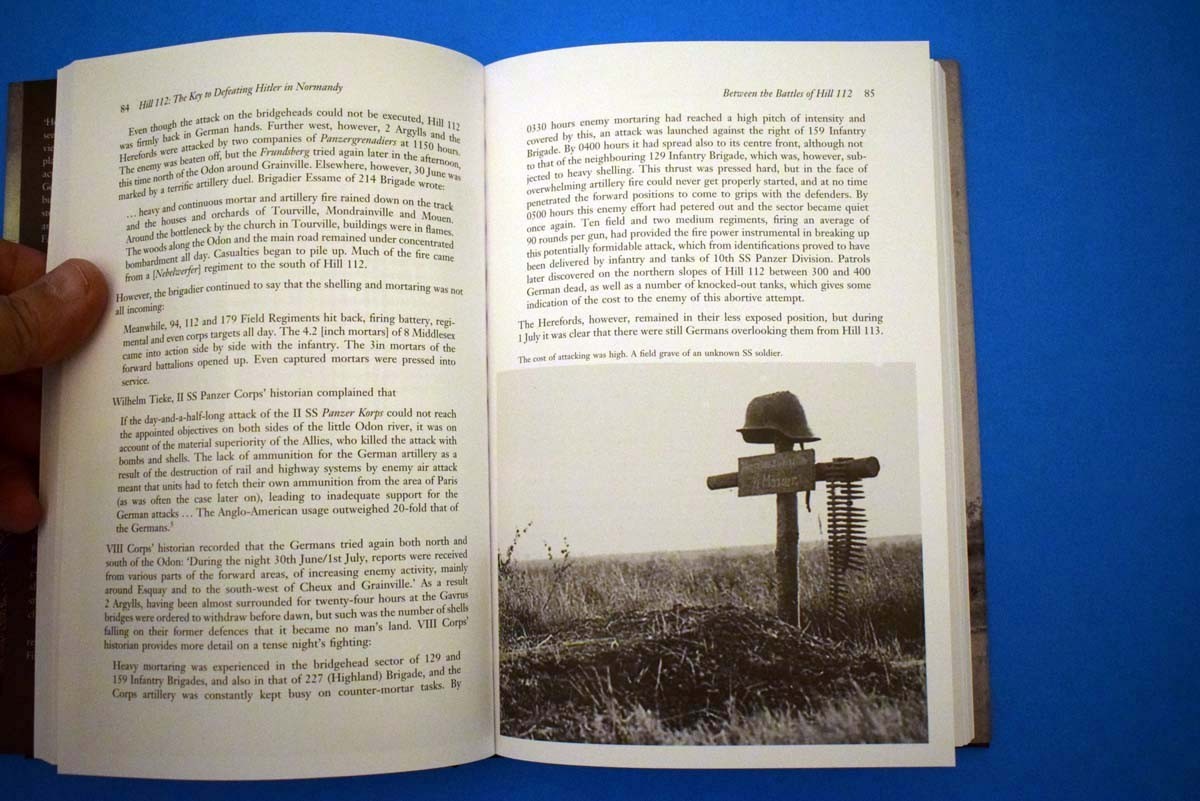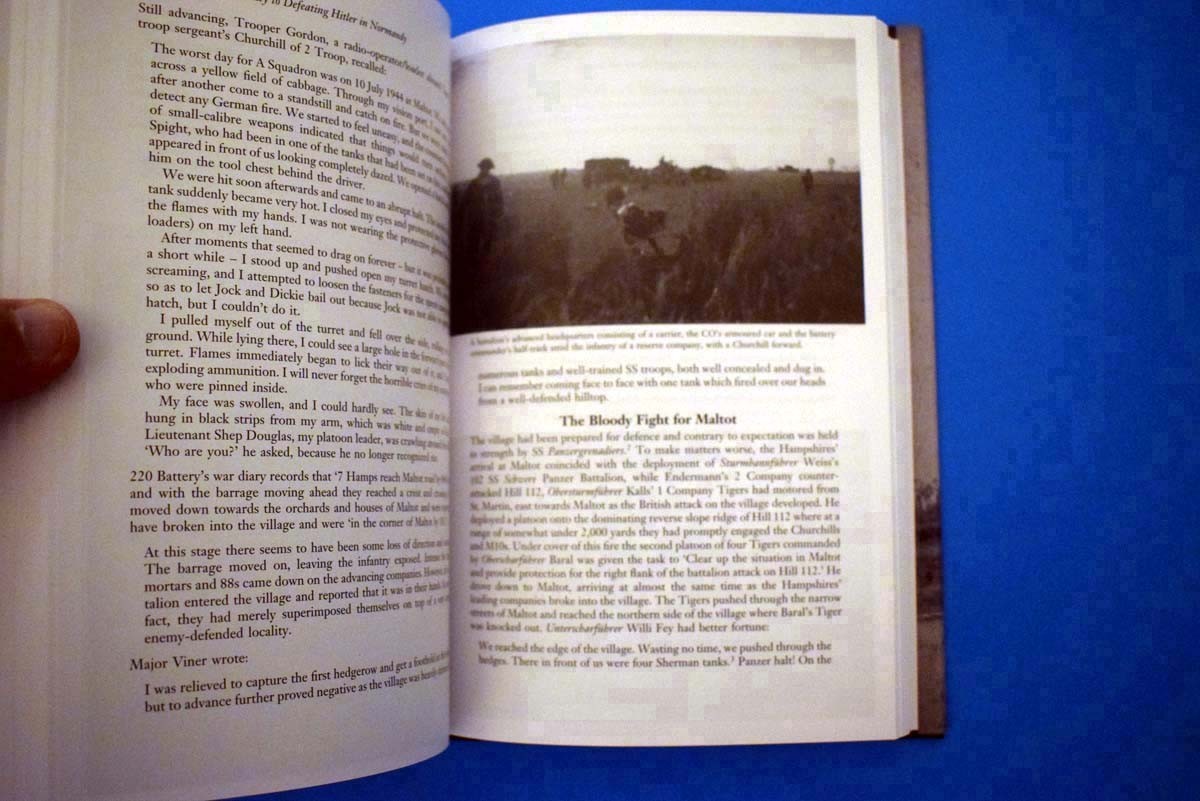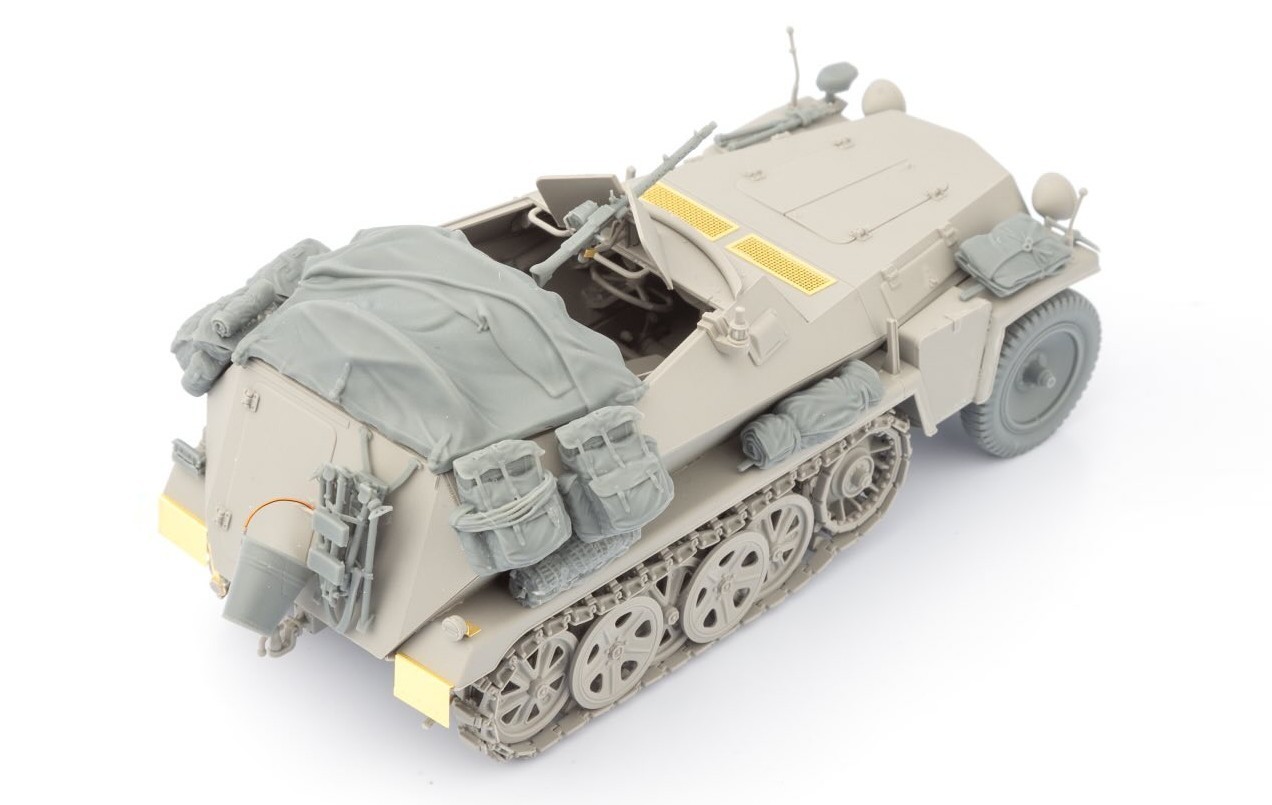
Introduction
The following introduction is taken from the \pen and Sword website:
‘He who holds Hill 112 holds Normandy’ seemed an unlikely maxim when the hill is viewed from a distance, but on reaching its plateau, the vistas unfold in every direction across a huge swath of Normandy. For the Germans it was their vital defensive ground, but for the British it was an essential steppingstone en route to the River Orne and access to the open country south to Falaise.
The Hitlerjugend SS Panzer Division lost Hill 112 to 4th Armoured Brigade when the Scots captured the Tourmauville Bridge intact, but the essence of Hill 112’s tactical problem soon became clear. It was impossible for armour to survive on its broad plateau, while the infantry could only hold the skeletal orchards and woods at the cost of crushing casualties. With II SS Panzer Corps preparing to attack the British, the toe hold was given up and 11th Armoured Division was left holding a bridgehead across the River Odon.
Ten days later, 43rd Wessex Division was ordered to resume the advance to the Orne with Hill 112 its first objective. As the west countrymen and tanks rose to advance, they met withering fire from the stronghold that Hill 112 had become. The scene was set for one of the grimmest battles of the campaign.
For six weeks from the end of June into August, when the Allied advances finally gained momentum, Hill 112 was far too important to let the opposition hold and exploit it. Consequently, it was regularly shelled and mortared, and shrouded with smoke and dust, while soldiers of both sides clung to their respective rims of the plateau.
By the end, Hill 112 had developed a reputation as evil as that of any spot on the First World War’s Western Front.
Review
This offering from Pen and Sword is a hard backed book authored by Tim Saunders. The book is presented in portrait style and contains 328 pages of semi-matt paper, between the covers are 75 black and white photographs and 30 maps. The chapters of the book are set out as follows:
1 The Invasion
2 Operation EPSOM
3 The First Battle of Hill 112
4 Between the Battles on Hill 112
5 The Initial Assault on Hill 112
6 Counter attach at Hill 112
7 Eterville
8 Maltot
9 “The Attack is to be Renewed”
10 Cornwall Wood
11 11th July 1944
12 Maltot Again
Please excuse me if I wander off script, reference this book covering Hill 112, as I would like to dedicate it to Albert Figg. A man who was in the Royal Artillery and served the entire duration of World War II and was one of the gunners engaged in attacks on Hill 112. I was very lucky to have meet Albert Figg and on one day spent nearly 8 hours talking to him over the course of a Tank Fest event at Bovington Tank museum. Albert made it his life’s goal to plant an avenue of trees and the placement of memorials to those who fought and fell at Hill 112. Albert unfortunately passed away on Monday July 3rd 2017, in his 97th year of life. His memories of events and of those individuals who fought during the battles brought to life what many would consider to be history. He is and will always be missed by many, especially my daughter who occasionally had the privilege of assisting Albert in his movement at events.
The book itself looks at the people who were commanding the various combatants over the course of the assaults on Hill 112. The contents of the book is presented in two styles, with the dry style being the factual presentation of information, dates, times, who, when, why and what. To the more fluid presentation, where stories of the various points of combat are told by the people who were there, with the result that you get the conditions and reasons for the conflict in this location and the impressions and memories of those who fought in the conflict.
Conclusion
This offering from Pen and Sword that does the unusual for me in that it adds the bones to the meat of the story of Hill 112. Perhaps the greatest tribute that I can give it, is how it brought back memories of Albert Figg and the stories which he reminisced about when I met him.






























